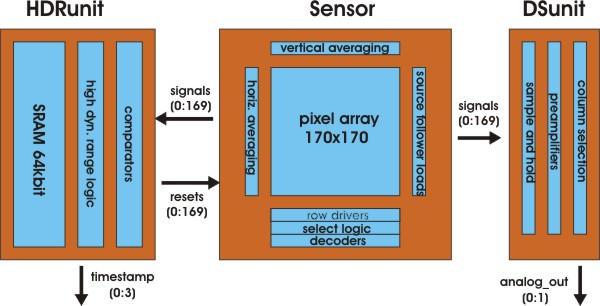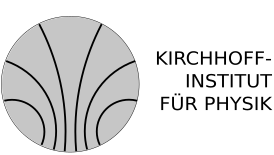Increasing the dynamic range (DR) of CMOS sensors with respect to given constraints such as resolution, chip size and power consumption is a demanding task. Several approaches to enhance the DR of CMOS sensors have been proposed. Most of them can be assigned to two different approaches to solve the problem.
In the first approach continuously working sensors are used. Due to the exponential current-voltage characteristic of a MOS transistor in weak inversion, it is possible to get a logarithmic response of the sensor. By this it is possible to cover many decades of light intensity in a single image.
The second approach is characterized by the use of integrating sensors. These sensors integrate the currents produced by the absorbed light over a certain period of time. The amount of collected charge together with the integration time gives information about the light intensity received by the sensor. Several pictures taken with different integration times can be used to calculate a picture covering up to 6 decades of light intensity. Analysis results suggest that multiple sampling can achieve a consistently higher signal to noise ratio at equal DR than other enhancement schemes.
Our new sensor VIENNA (Vision Enhancement for a Neural Network Architecture) follows the second approach. It was designed to serve as one of the sensory inputs in the project SENSEMAKER. VIENNA will offer flexible image acquisition by a movable region of interest with adjustable DR, possible averaging of neighbouring pixels and easy reconstruction of the image. The chip is now back from fabrication and first results are expected in the near future. The test system will include an FPGA board developed in our group.
 Functional block diagram of VIENNA. Analog data acquisition is done by the double sampling unit (DSunit) while high dynamic range expansion is done by the HDR unit.
Functional block diagram of VIENNA. Analog data acquisition is done by the double sampling unit (DSunit) while high dynamic range expansion is done by the HDR unit.
Electronic Visions Group – Prof. Dr. Johannes Schemmel
Im Neuenheimer Feld 225a
69120 Heidelberg
Germany
phone: +49 6221 549849
fax: +49 6221 549839
email: schemmel(at)kip.uni-heidelberg.de
How to find us


